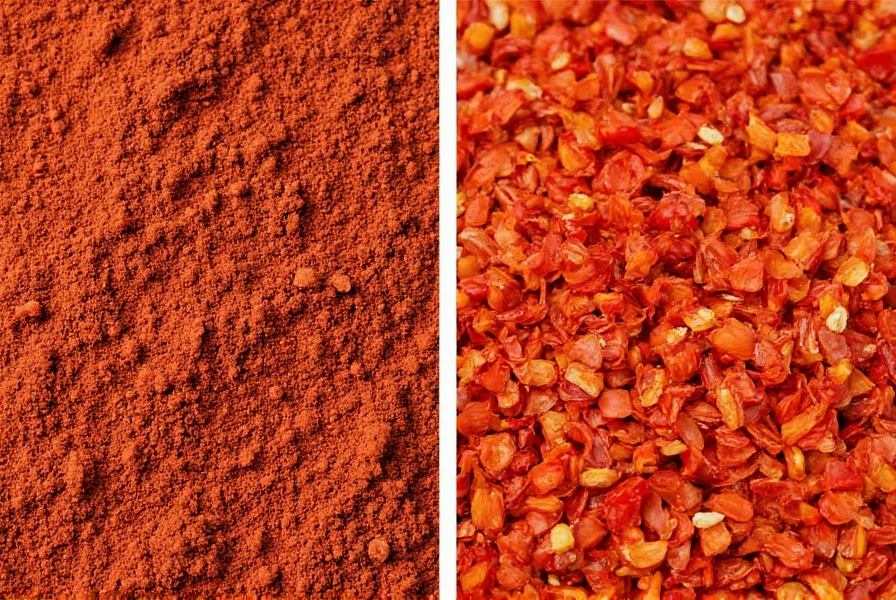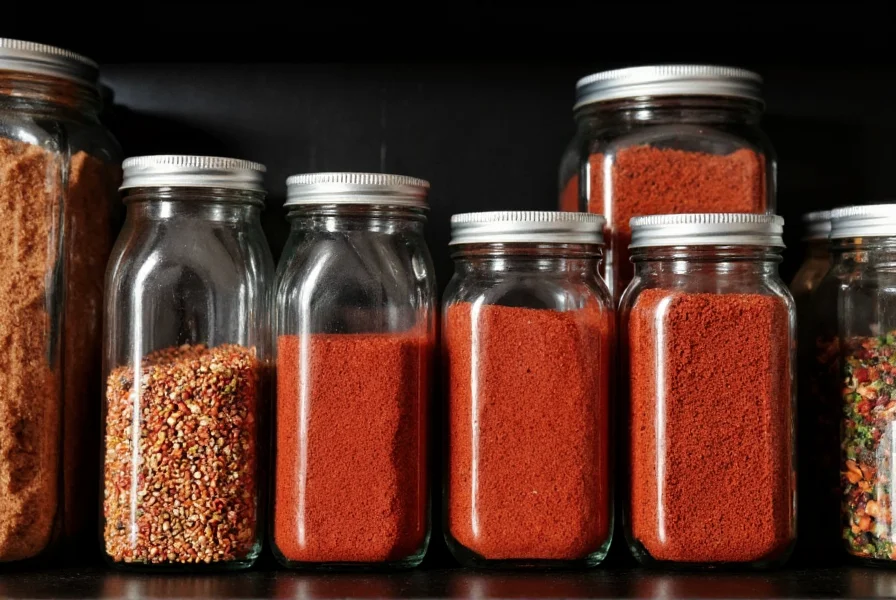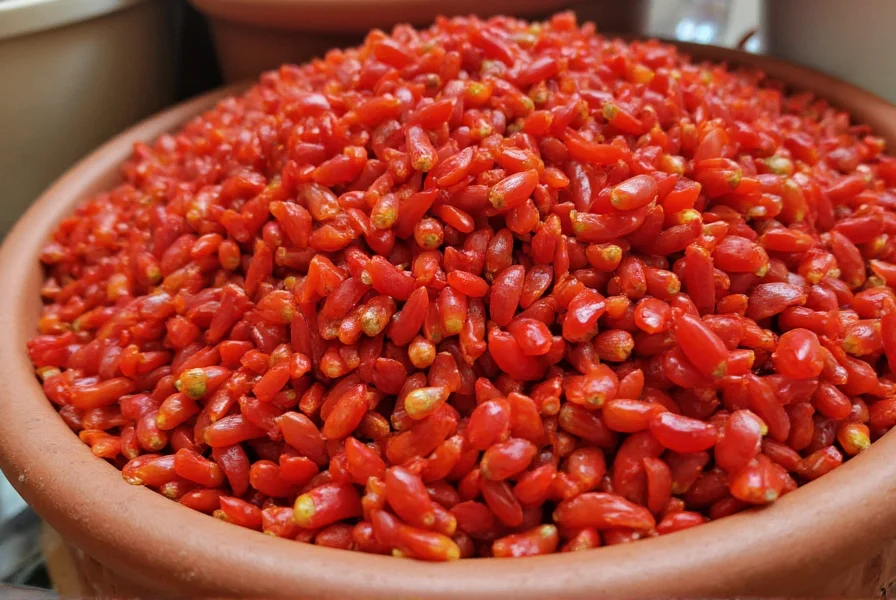Understanding the nuances of crushed red pepper can transform your cooking experience. This versatile spice brings both heat and depth to dishes, but many home cooks confuse it with similar products like red pepper flakes or cayenne powder. Let's explore what makes crushed red pepper unique and how to maximize its culinary potential.
What Exactly Is Crushed Red Pepper?
Crushed red pepper consists of dried chili peppers that have been coarsely ground into small flakes and powder. Unlike single-variety red pepper flakes (which are typically pure cayenne), commercial crushed red pepper blends often contain a mixture of different red chili varieties including cayenne, ancho, and sometimes even small amounts of bell peppers for complexity.
The production process involves harvesting ripe red peppers, drying them thoroughly (either sun-dried or using dehydrators), then mechanically crushing them to achieve the characteristic mix of fine powder and small flakes. This dual texture provides both immediate heat from the fine particles and gradual flavor release from the larger flakes during cooking.
Crushed Red Pepper vs. Similar Products
Many people use the terms "crushed red pepper" and "red pepper flakes" interchangeably, but there are important distinctions:
| Product | Composition | Heat Level (SHU) | Texture |
|---|---|---|---|
| Crushed Red Pepper | Mixed chili varieties | 2,500-30,000 | Mixture of fine powder and small flakes |
| Red Pepper Flakes | Usually pure cayenne | 30,000-50,000 | Larger, more uniform flakes |
| Cayenne Powder | 100% cayenne, finely ground | 30,000-50,000 | Fine, uniform powder |
| Paprika | Sweet or hot pepper varieties | 0-15,000 | Fine powder |
When shopping for crushed red pepper, check the ingredient list. Authentic blends will list multiple chili varieties, while single-ingredient products are technically red pepper flakes. This distinction matters because the flavor profile differs significantly—mixed blends offer more complexity with varying heat levels throughout the cooking process.

Flavor Profile and Heat Characteristics
Crushed red pepper delivers a more nuanced heat experience than single-variety alternatives. The blend typically starts with a moderate initial warmth that builds gradually, unlike cayenne powder which delivers immediate, intense heat. This makes crushed red pepper particularly valuable in slow-cooked dishes where the heat can develop alongside other flavors.
The specific heat level depends on the blend's composition. Most commercial crushed red pepper ranges from 2,500 to 30,000 Scoville Heat Units (SHU), placing it between mild paprika and pure cayenne pepper on the heat scale. The presence of multiple pepper varieties creates a layered heat experience—some components provide immediate warmth while others release heat more gradually during cooking.
Optimal Culinary Applications
Crushed red pepper shines in applications where you want both immediate and sustained heat. Its dual texture makes it particularly effective in:
- Pizza and pasta dishes: Sprinkle on finished dishes for instant heat with lingering flavor
- Marinades and rubs: The fine particles help distribute heat evenly while flakes provide texture
- Slow-cooked sauces and stews: Allows heat to develop gradually throughout cooking
- Infused oils: Creates beautifully layered heat in olive oil infusions
- Baked goods: Adds subtle warmth to savory biscuits and breads
For best results, add crushed red pepper early in the cooking process when you want integrated heat, or as a finishing touch when you desire immediate warmth with visual appeal. The small flakes provide attractive flecks of color that pure powders lack.
Substitution Guidance
If you need crushed red pepper substitution options, consider these alternatives based on your specific needs:
- For similar heat and texture: Mix 2 parts red pepper flakes with 1 part paprika
- For milder heat: Use smoked paprika with a pinch of cayenne
- For immediate heat: Cayenne powder (use 1/3 the amount)
- For complex flavor without intense heat: Aleppo pepper
Remember that substitutions won't perfectly replicate crushed red pepper's unique characteristics. When substituting, start with less than you think you need and adjust gradually, as heat perception varies significantly between different chili products.
Proper Storage Techniques
To maintain crushed red pepper's flavor and heat potency, proper storage is essential. Exposure to light, heat, and moisture degrades capsaicin (the compound responsible for heat) and volatile flavor compounds. Follow these storage recommendations:
- Store in an airtight container away from direct light
- Keep in a cool, dark place (not above the stove!)
- For extended storage (beyond 6 months), refrigerate in a sealed container
- Avoid storing near strong-smelling foods as spices can absorb odors
Properly stored crushed red pepper maintains optimal flavor for 6-12 months. You'll know it's past its prime when the vibrant red color fades to dull brown and the characteristic aroma diminishes significantly.

Nutritional Profile and Health Considerations
While primarily used for flavor, crushed red pepper offers some nutritional benefits. One teaspoon (about 2 grams) typically contains:
- Negligible calories (about 6 per teaspoon)
- Vitamin A (15% of daily value)
- Vitamin C (8% of daily value)
- Small amounts of potassium and iron
The capsaicin in crushed red pepper has been studied for potential health benefits including temporary metabolism boost and pain relief properties. However, these effects require consumption levels that may be uncomfortable for many people. As with any spice, moderation is key—excessive consumption can cause digestive discomfort for sensitive individuals.
Frequently Asked Questions
Is crushed red pepper the same as red pepper flakes?
No, they're different. Crushed red pepper typically contains a blend of various dried red chili varieties creating a mix of fine powder and small flakes, while red pepper flakes are usually pure cayenne in larger, more uniform pieces. The blend in crushed red pepper creates a more complex flavor profile with layered heat.
How much crushed red pepper equals cayenne pepper?
Due to varying heat levels in crushed red pepper blends, use approximately 1.5-2 times more crushed red pepper to match cayenne's heat. Start with 1.5 times the amount and adjust to taste, as commercial crushed red pepper blends are generally milder than pure cayenne powder.
Can I make my own crushed red pepper blend?
Yes, creating your own blend allows customization. Combine equal parts dried cayenne, ancho, and guajillo peppers, then pulse in a food processor until you achieve a mix of fine powder and small flakes. For complexity, add a small amount of sweet bell pepper. Store in an airtight container away from light and heat.
Why does my crushed red pepper lose heat over time?
Capsaicin, the compound responsible for heat, degrades when exposed to light, air, and moisture. Proper storage in an airtight container in a cool, dark place preserves heat longer. Most crushed red pepper maintains optimal heat for 6-12 months when stored correctly. The fine powder components lose potency faster than the larger flakes.
What dishes work best with crushed red pepper?
Crushed red pepper excels in pizza, pasta dishes, marinara sauces, and slow-cooked stews where its dual texture provides both immediate and developing heat. It's also excellent in rubs for meats, infused olive oils, and as a finishing spice for soups and roasted vegetables. The small flakes add visual appeal that pure powders lack.











 浙公网安备
33010002000092号
浙公网安备
33010002000092号 浙B2-20120091-4
浙B2-20120091-4